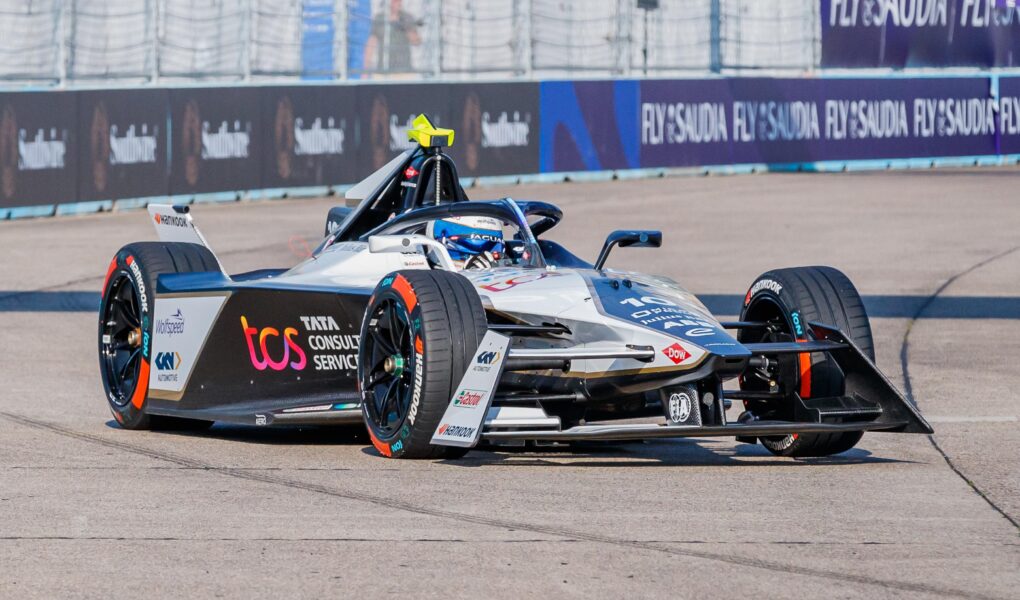In the high-octane world of motorsport, where speed and innovation are the defining characteristics of performance excellence, a new contender is quietly reshaping the race track: the electric race car. Once thought of as the realm of futuristic concepts and experimental prototypes, electric vehicles are now revving into the spotlight, demonstrating that they can deliver blistering speed, unparalleled precision, and significant environmental benefits. As racing circuits worldwide begin to embrace this electrifying technology, the automotive landscape is poised for a dramatic transformation. This article will explore the rise of electric race cars, examining their engineering breakthroughs, the competitive landscape, and the implications of this shift for the future of motorsport. Buckle up as we delve into the unions of silence and speed, where innovation meets adrenaline on the racetrack.
Table of Contents
- The Rise of Electric Race Cars in Competitive Motorsports
- Innovative Technologies Driving Electric Performance
- Sustainability Meets Speed: The Environmental Impact of Electric Racing
- Tips for Aspiring Teams: Building Your Electric Race Car for Success
- Q&A
- Future Outlook
The Rise of Electric Race Cars in Competitive Motorsports
The automotive world is witnessing a transformative shift as electric race cars surge in popularity within competitive motorsports. These cutting-edge machines are not just a nod to sustainability; they showcase the technological prowess of engineers who are pushing the boundaries of speed and efficiency. The electrification of racing has led to significant advancements in battery technology, aerodynamics, and energy management systems. Notable events, such as Formula E, have captivated audiences with high-speed action while promoting an eco-friendly message. The integration of electric powertrains has attracted not only traditional motorsport enthusiasts but also a new generation of fans who prioritize innovation and sustainability.
As teams invest heavily in research and development, the benefits of electric race cars become increasingly evident. Key advantages include:
- Instant Torque: Electric motors deliver power instantaneously, allowing for remarkable acceleration.
- Lower Operating Costs: With fewer moving parts than traditional combustion engines, electric cars often incur lower maintenance costs.
- Regenerative Braking: This technology not only enhances efficiency but also adds an exciting strategic element to races.
These factors contribute to a growing ecosystem where both established automotive brands and new startups are investing in electric racing. The competition has become not only a testing ground for bold innovations but also a platform for showcasing the potential of greener technologies in the fast-paced world of motorsport.
Innovative Technologies Driving Electric Performance
Electric race cars are at the forefront of automotive innovation, showcasing a blend of cutting-edge technologies that enhance performance while conserving energy. Key advancements include:
- Regenerative Braking: This technology captures kinetic energy during braking and reuses it, significantly increasing efficiency.
- Advanced Battery Management Systems: Smart algorithms monitor the health and performance of battery cells, optimizing output and extending lifespan.
- Lightweight Materials: The use of carbon fiber and aluminum reduces vehicle weight, allowing for improved acceleration and handling.
- Electric All-Wheel Drive (AWD): Instant torque delivery provides superior traction and stability, especially in competitive racing scenarios.
Additionally, innovative cooling systems play a vital role in managing battery and motor temperatures, ensuring optimal performance during races. Here are some notable developments:
| Technology | Benefit |
|---|---|
| Liquid Cooling | Maintains optimal temperature for efficiency and longevity |
| Airflow Optimization | Reduces overheating and enhances aerodynamics |
| Thermal Interface Materials | Improves heat dissipation across components |
Sustainability Meets Speed: The Environmental Impact of Electric Racing
The dawn of electric racing is not just a technological marvel but also a significant step toward reducing the environmental footprint of motorsports. With traditional combustion engines emitting vast amounts of greenhouse gases, the shift to electric vehicles in racing domains offers a refreshing alternative. These high-octane competitions can now operate on paths that champion sustainability, becoming platforms for innovation that prioritize eco-friendliness. Consider the following benefits:
- Reduction in Emissions: Electric race cars produce zero tailpipe emissions, making them a cleaner alternative to their gasoline-powered counterparts.
- Energy Efficiency: Electric vehicles convert over 60% of the electrical energy from the grid to power at the wheels, surpassing traditional vehicles’ efficiency.
- Renewable Energy Integration: Many electric racing events utilize renewable energy sources, showcasing the potential of solar, wind, and other forms of clean energy.
This revolutionary approach not only paves the way for a greener future in motorsports but also influences automotive technology at large. High-profile races such as Formula E are becoming essential laboratories for testing new electric technologies, potentially leading to advancements that can be applied to consumer vehicles. As these innovations unfold, we witness expanded possibilities for sustainability initiatives across various sectors. Below is a simple comparison of different racing types and their environmental impacts:
| Racing Type | Emissions | Energy Source |
|---|---|---|
| Electric Racing | 0 g CO2/km | Typically renewable |
| Gasoline Racing | Up to 300 g CO2/km | Fossil fuels |
| Hybrid Racing | 150 g CO2/km | Mixed sources |
Tips for Aspiring Teams: Building Your Electric Race Car for Success
When embarking on the thrilling journey of building an electric race car, team collaboration is essential. Ensure that each member’s strengths are harnessed effectively by encouraging open communication and brainstorming sessions. Consider holding regular meetings to discuss progress, challenges, and new ideas. Utilize tools like project management software to keep everyone aligned on tasks, deadlines, and milestones. By fostering a culture of teamwork, you elevate the chances of innovating solutions when problems arise, ultimately steering your project towards success.
In addition to cooperation, research and education are crucial to creating a high-performance electric race car. Equip your team with knowledge about the latest battery technologies, motor designs, and aerodynamics. Workshops and hands-on experience can significantly enhance your technical skills. Explore the following areas to deepen your understanding:
- Battery management systems
- Electric motor configuration
- Lightweight materials for chassis
- Aerodynamic design principles
Here’s a simplified table comparing some battery types that can be utilized in electric race cars:
| Battery Type | Energy Density (Wh/kg) | Charge Time |
|---|---|---|
| Lithium-ion | 150-250 | Approx. 1-3 hours |
| Lithium Polymer | 150-300 | Approx. 1-2 hours |
| Sodium-ion | 100-150 | Approx. 3-5 hours |
Q&A
Q&A: Exploring the World of Electric Race Cars
Q1: What is an electric race car?
A: An electric race car is a high-performance vehicle that operates exclusively on electric power, using battery packs instead of conventional internal combustion engines. These cars are engineered for speed, agility, and environmental sustainability, showcasing advancements in technology while challenging the limits of traditional racing.
Q2: How do electric race cars compare to traditional race cars in terms of performance?
A: Electric race cars can match, and often exceed, the performance metrics of their gasoline counterparts. They deliver instant torque and acceleration, allowing for rapid speed gains. With advancements in aerodynamics and battery technology, many electric race cars are designed to achieve exceptional lap times, proving that electric power can compete at the highest levels of motorsport.
Q3: What are some key features of electric race cars?
A: Electric race cars are equipped with features like regenerative braking systems, which recapture energy during deceleration, and advanced battery management systems that optimize performance and efficiency. They also often include lightweight materials, such as carbon fiber, for improved aerodynamics and handling. Many models showcase cutting-edge technology including telemetry systems to gather real-time performance data.
Q4: What racing series are dedicated to electric vehicles?
A: The most prominent racing series for electric vehicles is Formula E, a fully electric single-seater championship that attracts manufacturers and drivers alike. Other notable events include the Electric GT Championship and various e-motorsport competitions that highlight electric car performance in a competitive setting.
Q5: Are electric race cars more environmentally friendly than traditional race cars?
A: In general, electric race cars produce zero tailpipe emissions, making them a more environmentally friendly choice during races. However, the overall environmental impact depends on the source of the electricity used to charge their batteries. If powered by renewable energy, the ecological benefits are significantly enhanced, reinforcing the push for sustainability in motorsport.
Q6: What challenges do electric race cars face in the world of racing?
A: Electric race cars encounter several challenges, including battery life and charging time, which can affect race strategy. Engineers and teams continuously work to improve battery endurance and reduce charging periods. Additionally, there is the challenge of fan engagement, as traditional engine sounds and sensations are linked to the allure of motorsports, prompting a need for innovations to enhance the spectator experience.
Q7: Can electric race cars be tuned and modified like traditional race cars?
A: Yes, electric race cars can be tuned and modified, albeit the processes differ from conventional vehicles. Modifications often focus on software updates, energy management systems, and weight reduction strategies. As technology evolves, more avenues for tuning and personalization of electric race cars are emerging, making them versatile on the racetrack.
Q8: What does the future hold for electric race cars?
A: The future for electric race cars appears bright, with increasing investment from major automotive brands and technological innovations. As battery technology and charging infrastructures improve, we can expect electric race cars to become faster, more competitive, and even more popular among fans. Furthermore, as policy and consumer demand shifts toward sustainability, electric motorsport may soon become the standard rather than the exception, paving the way for the next generation of racing.
Future Outlook
As we conclude our journey through the world of electric race cars, it’s clear that these remarkable machines are not just a fleeting trend but a testament to the future of automotive innovation. With their blend of cutting-edge technology, unparalleled performance, and a commitment to sustainability, electric race cars are redefining the boundaries of motorsport. As the lines between speed and eco-friendliness continue to blur, the excitement surrounding these electric steeds promises to ignite a new generation of racers and fans alike.
In the coming years, we can anticipate further advancements that will push the envelope of what’s possible on the racetrack, making it an electrifying time for motorsport enthusiasts. Whether you are a die-hard fan or a curious spectator, one thing is certain: the roar of the electric engine is just beginning, and the race toward a sustainable future has only just begun. Buckle up, because the electric revolution in racing is here to stay.

